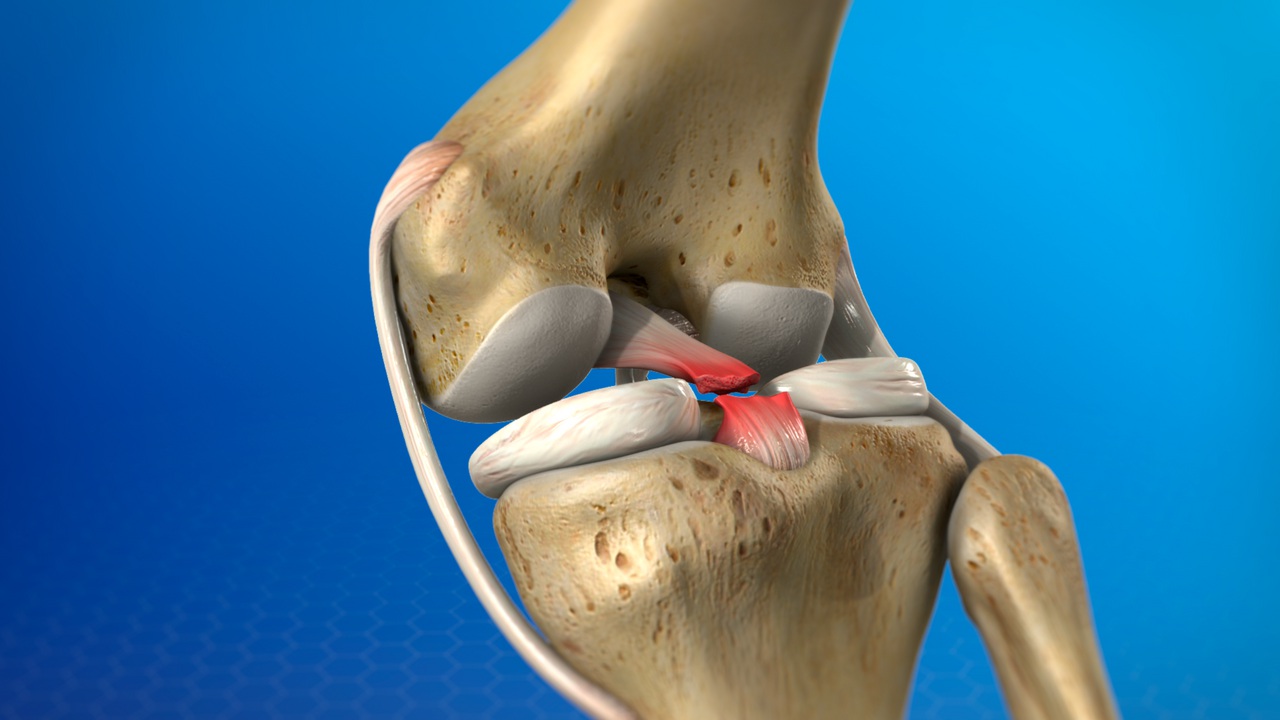Timings
Evercare Hospital Lahore
- Monday - Thursday (11 am - 01 pm)(07 pm - 09 pm)
- Friday (02 pm - 05 pm)(07 pm - 09 pm)
- Saturday (04 pm - 06 pm)
Contact Info
- Phone: 03060603646
- Whatsapp: 03060603646
- Email: Info@drwaqasjavedorthopedics.com
PCL TEAR

The Posterior Cruciate Ligament (PCL) is a crucial structure in your knee, often called the “forgotten ligament” due to its less frequent injuries compared to its counterpart, the Anterior Cruciate Ligament (ACL). However, when a PCL tear occurs, it can significantly impact your knee’s stability and overall function.
PCL tears typically happen during high-energy traumas, such as:
– Car accidents (dashboard injuries)
– Sports injuries (especially football and soccer)
– Falls on a bent knee
Understanding pcl tear symptoms is crucial for early diagnosis and treatment. Common signs include:
– Pain and swelling in the knee
– Feeling of instability or “giving way”
– Difficulty walking or bearing weight
– Stiffness in the knee joint
The Importance of PCL Tear Grading in Radiology
Accurate diagnosis and treatment planning rely heavily on proper pcl tear grading radiology. Radiologists use various imaging techniques, primarily MRI, to assess the extent of the injury. The grading system typically includes:
Grade I: Partial tear with minimal laxity
Grade II: Partial tear with increased laxity
Grade III: Complete tear with significant instability
Understanding this grading system helps both patients and healthcare providers make informed decisions about treatment options.
Recent Advancements in PCL Tear Treatment in Pakistan
The field of orthopedic surgery has seen remarkable advancements in recent years, and Pakistan is keeping pace with these global trends. Some notable improvements include:
- Arthroscopic PCL Reconstruction: Minimally invasive techniques that result in faster recovery and less scarring.
- Advanced Graft Options: Including autografts (from the patient’s own body) and allografts (from donors), offering more personalized treatment options.
- Computer-Assisted Surgery: Enhancing precision in graft placement and overall surgical outcomes.
- Improved Rehabilitation Protocols: Tailored pcl tear exercises and physiotherapy regimens that accelerate recovery and improve long-term outcomes.
These advancements have significantly improved the success rates of PCL reconstruction surgeries in Pakistan, bringing hope to many patients struggling with knee instability.
PCL Tear Statistics in Pakistan
While specific data on PCL tears in Pakistan is limited, global statistics provide valuable insights:
– PCL tears account for approximately 3% of all knee ligament injuries worldwide.
– In Pakistan, road traffic accidents are a leading cause of PCL injuries, particularly in urban areas like Lahore.
– Sports-related PCL injuries are increasing, especially among young adults participating in contact sports.
It’s important to note that many PCL tears go undiagnosed or are misdiagnosed initially, highlighting the need for improved awareness and diagnostic capabilities in our healthcare system.
Traditional vs. Advanced PCL Tear Treatment:
Treatment approaches for PCL tears have evolved significantly over the years. Let’s compare traditional and advanced methods:
Traditional Methods:
– Conservative management with bracing and physiotherapy
– Open surgery with larger incisions
– Limited graft options
– Longer recovery times
Advanced Methods:
– Arthroscopic surgery with minimal incisions
– Computer-assisted precision in graft placement
– Wider range of graft options
– Accelerated rehabilitation protocols
The advanced techniques offer several benefits:
– Reduced postoperative pain
– Lower risk of complications
– Faster return to daily activities and sports
– Improved long-term knee stability
Benefits for Pakistani Patients
These advancements in PCL tear treatment bring numerous benefits to Pakistani patients:
- Improved Accessibility: With more orthopedic surgeons trained in advanced techniques, patients can receive high-quality care without traveling abroad.
- Faster Recovery: Minimally invasive procedures mean less time in the hospital and quicker return to work or school.
- Better Long-Term Outcomes: Advanced techniques and materials result in more durable repairs and reduced risk of re-injury.
- Cost-Effective Treatment: While advanced procedures may have higher upfront costs, the reduced recovery time and lower complication rates often make them more economical in the long run.
Addressing Common Concerns and Misconceptions
Let’s tackle some frequent questions and misconceptions about PCL tears:
Myth: All PCL tears require surgery.
Fact: Not all PCL tears need surgical intervention. Grade I and some Grade II tears can often be managed conservatively with bracing and pcl tear exercises.
Myth: PCL reconstruction always results in a fully normal knee.
Fact: While PCL reconstruction significantly improves knee stability and function, some patients may experience slight residual laxity.
Myth: You can’t return to sports after a PCL tear.
Fact: With proper treatment and rehabilitation, many athletes successfully return to their sports, even at competitive levels.
Dr. Waqas Javed’s Expertise in PCL Tear Treatment
As a consultant orthopedic surgeon specializing in knee injuries, I have extensive experience in treating PCL tears. My approach combines the latest global advancements with a deep understanding of the unique needs of Pakistani patients.
Key aspects of my practice include:
– Comprehensive evaluation using state-of-the-art imaging techniques
– Personalized treatment plans tailored to each patient’s needs and goals
– Expertise in both conservative management and advanced surgical techniques
– A focus on patient education and involvement in the treatment process
Patient Success Stories
While maintaining patient confidentiality, I’d like to share a few anonymized success stories:
Case 1: A 28-year-old professional cricketer suffered a Grade III PCL tear during a match. After arthroscopic reconstruction and intensive rehabilitation, he returned to national-level competition within 9 months.
Case 2: A 45-year-old teacher with a chronic PCL injury causing persistent knee pain underwent PCL reconstruction. Six months post-surgery, she reported significant improvement in pain and stability, allowing her to resume her active lifestyle.
These cases highlight the potential for successful outcomes with proper treatment and rehabilitation.
Post-Operative Care and Rehabilitation in the Pakistani Context
Recovery from PCL reconstruction is a journey that requires dedication and patience. In the Pakistani healthcare context, we’ve developed rehabilitation protocols that take into account local resources and cultural considerations:
Phase 1 (0-6 weeks post-surgery):
– Protection of the graft
– Gradual range of motion exercises
– Weight-bearing as tolerated with crutches
– Basic pcl tear exercises to maintain muscle tone
Phase 2 (6-12 weeks):
– Progressive weight-bearing
– Increased range of motion exercises
– Introduction of low-impact cardiovascular activities
– Strengthening exercises for quadriceps and hamstrings
Phase 3 (3-6 months):
– Advanced strengthening exercises
– Sport-specific training
– Gradual return to normal activities
Phase 4 (6+ months):
– Return to sports (if applicable)
– Continued maintenance exercises
Throughout this process, we emphasize the importance of following medical advice and avoiding premature return to high-impact activities.
The Future of PCL Tear Treatment in Pakistan
Looking ahead, the future of PCL tear treatment in Pakistan is promising. We anticipate:
- Increased awareness leading to earlier diagnosis and treatment
- More widespread adoption of advanced surgical techniques
- Improved rehabilitation facilities and programs
- Potential for biologics and regenerative therapies to enhance healing.
As healthcare professionals, we’re committed to staying at the forefront of these advancements to provide the best possible care for our patients.
Find Out Answers Here
Full recovery typically takes 6-9 months, though this can vary based on individual factors and the extent of the injury.
Some PCL tears, particularly Grade I and some Grade II injuries, can be managed non-surgically. Your doctor will assess your specific case to determine the best treatment approach.
Yes, most patients wear a knee brace for several weeks post-surgery to protect the graft and support healing.
Your physiotherapist will provide a tailored exercise program. Common exercises include quad sets, straight leg raises, and gentle range of motion exercises.
Success rates for PCL reconstruction are generally high, with most patients experiencing significant improvements in knee stability and function.
REFERENCES
1. Pache, S., et al. (2023). "Posterior Cruciate Ligament: Current Concepts Review." Journal of Bone and Joint Surgery, 105(6), 537-549.
2. Khan, M.S., et al. (2022). "Epidemiology of Knee Injuries in Pakistani Athletes: A Retrospective Study." Pakistan Journal of Medical Sciences, 38(4), 1021-1026.
3. Shelbourne, K.D., et al. (2023). "Long-term Outcomes of Posterior Cruciate Ligament Tears Treated Nonoperatively." American Journal of Sports Medicine, 51(3), 612-618.
6. Pakistan Bureau of Statistics. (2024). "Pakistan Social and Living Standards Measurement Survey 2023-24." Government of Pakistan.
8. Ahmad, S., et al. (2023). "Trends in Sports-Related Injuries Among Young Adults in Urban Pakistan: A Five-Year Analysis." Asian Journal of Sports Medicine, 14(2), 32-39.

Conditions I Treat

- Knee Injuries
- Orthopedic Infections
- PCL Injuries
- Multi-ligament Injuries
- Joint Replacement
- Kneecap Dislocations
- Knee Replacement
- Sport Injuries of Knee
- Lower Limb Fractures
- Hip Injuries
- Hip Replacement
- Back Pain
- Shoulder, Elbow, Wrist
- Upper Limb Fractures
- Neck Pain